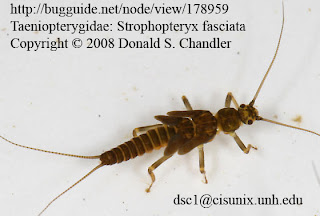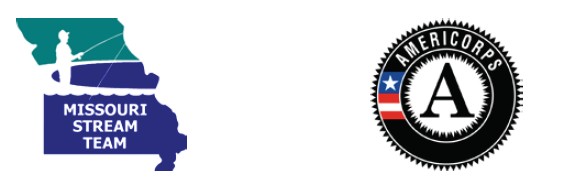
I took this slightly fuzzy picture of a "Common Whitetail dragonfly" or "Long tailed skimmer" on the lower reach of Watkins Creek between the old Coal Bank Rd bridge and the deadend posts.
While the Mississippi River is within easy flying distance, it is more probable that this creature emerged from Watkins creek. He was found at UTM Zone 15S, Easting 7,444,631.54 Northing 4,295,313.27
The squarish brown blocks on the wings and the distinctive white tail suggest this is
Plathemis lydia (aka?)
Libellula lydia and also tell us that this is a mature male (as only they get the white tail). "In 1955, M.E. Jacobs found that the white color of the male's abdomen was used in display to other males in a contest for territory and that its color did not influence female choice."
http://www.sonic.net/~bigsnest/Pond/dragons/skimmers.html#LILYI'll be looking for dragonfly larvae slightly upstream to rear in captivity to be sure. I found a copyrighted photo of this species larva at the University of Puget Sound's Slater Museum of Natural History
here. with the actual picture
here. A way to get copyright permissions was not immediately available.
This particular species does not appear in the
USGS county level checklist for species known to inhabit St. Louis county. It does appear in the list and
distribution map for St. Louis city. and the city/ county limit is very close to where this creature was found (though technically straying into county territory), but if this species were to be found spawning in watkins creek, the map should probably change.
A cool taxonomic key for the Odonates of Michigan can be found
here, the dragonflies (Anisoptera families)
here, and the crenallations specifying the species
here.Water quality monitoring
papers since the 50's have identified this species as "facultative" or "moderately pollution tolerant" with no apparent distinction between members of the order or family at the species level.
Species taxonomy also found
here: http://species.wikimedia.org/wiki/Libellula_lydia














